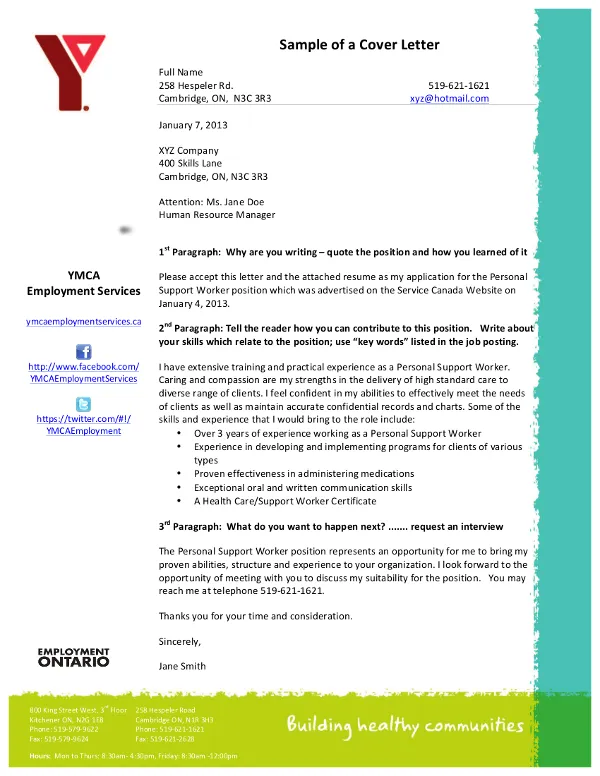What is a Cover Letter?
A cover letter is a crucial document that accompanies your resume when applying for a job. It serves as your introduction to the hiring manager, providing an opportunity to showcase your personality, skills, and experiences in a way that a resume alone cannot. Think of it as your personal sales pitch, designed to persuade the employer that you are the ideal candidate for the position. A well-crafted cover letter can significantly increase your chances of getting an interview. It goes beyond simply listing your qualifications; it tells a story, connecting your past experiences with the specific requirements of the job.
Why is a Cover Letter Important?
In today’s competitive job market, a cover letter is more important than ever. It’s your first chance to make a positive impression and distinguish yourself from other applicants. It allows you to elaborate on your qualifications and demonstrate your genuine interest in the role and the company. Recruiters often use cover letters to assess your communication skills, writing style, and attention to detail. A compelling cover letter shows that you’ve taken the time to research the company and understand the specific needs of the position. Skipping a cover letter, or submitting a generic one, can send the message that you are not truly interested in the opportunity, which can lead to your application being overlooked.
Key Components of a Cover Letter
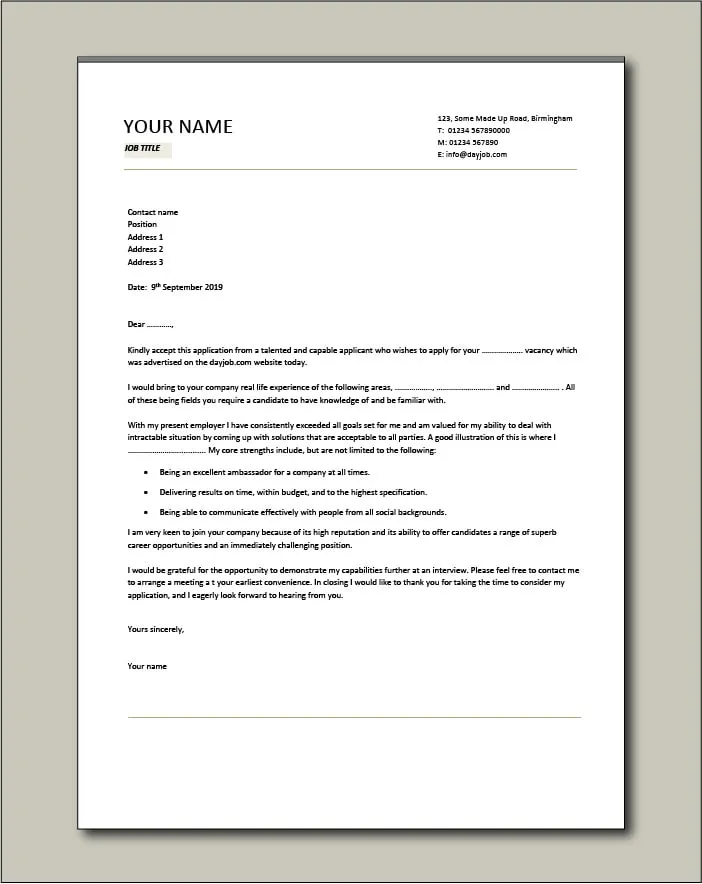
A well-structured cover letter follows a standard format, ensuring clarity and professionalism. Each section plays a vital role in conveying your message effectively. Adhering to this structure will help you create a cover letter that is both informative and engaging, increasing your chances of securing an interview. The key elements provide a comprehensive overview of your qualifications and your enthusiasm for the role. Mastering these components will empower you to create cover letters that stand out from the competition and leave a lasting impression on potential employers.
Your Contact Information
Start your cover letter by including your contact information at the top. This usually includes your full name, address, phone number, and email address. Ensure that your email address is professional and appropriate. This information should be clearly visible and easy for the employer to find, making it simple for them to contact you. Using a consistent and professional format across all application materials demonstrates your attention to detail and organization. This section establishes immediate contact information for the recruiter or hiring manager, streamlining the process if they decide to reach out.
Date and Recipient Details
Below your contact information, include the date and the recipient’s details. If you know the hiring manager’s name, address your letter to them; this shows you’ve done your research and demonstrates a personal touch. If the name is unavailable, use a general salutation such as ‘Dear Hiring Manager.’ This section ensures the letter is properly addressed and formatted, which helps to maintain a professional tone throughout your cover letter. Getting the recipient’s name right is crucial; it shows you’re attentive to details and have taken the effort to tailor your application, which improves your chances of making a good first impression.
Professional Salutation
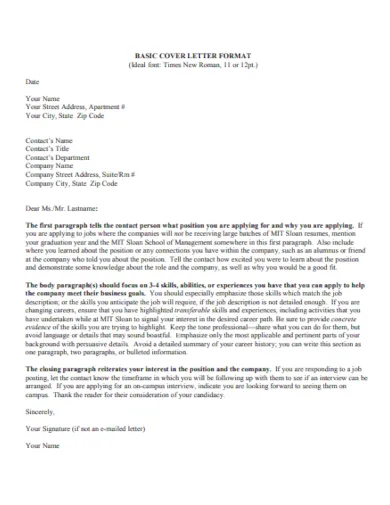
The salutation is your formal greeting. Use ‘Dear Mr./Ms./Mx. [Last Name]’ if you know the hiring manager’s name. If not, opt for ‘Dear Hiring Manager’ or ‘Dear [Department Name] Team.’ Avoid overly casual greetings such as ‘Hi’ or ‘Hello,’ as they may come across as unprofessional. A professional salutation sets the tone for the rest of your cover letter and demonstrates respect for the recipient. Selecting the correct salutation shows you respect professional norms and have taken the time to tailor your application, potentially increasing your chances of a positive response.
Opening Paragraph Grab Their Attention
Your opening paragraph is your opportunity to immediately grab the reader’s attention. State the position you’re applying for and where you saw the job posting. Briefly mention why you’re excited about the opportunity and what makes you a strong candidate. Consider including a compelling statement that reflects your understanding of the company’s mission or the role’s requirements. A well-crafted opening sets the stage for the rest of your letter, encouraging the reader to continue. Making a great first impression with this paragraph is critical for the overall impact of your application, making the hiring manager eager to know more about you.
Highlighting Your Skills and Experience
The body of your cover letter is where you showcase your skills and experience. Focus on the qualifications most relevant to the job description. Provide specific examples of your accomplishments and quantify your achievements whenever possible. Use action verbs to describe your responsibilities and achievements. Demonstrate how your skills and experience align with the requirements of the role and the needs of the company. This section proves your competence and suitability for the position. Linking your skills to the job requirements shows the hiring manager that you have carefully considered the role and its expectations.
Tailoring Your Cover Letter
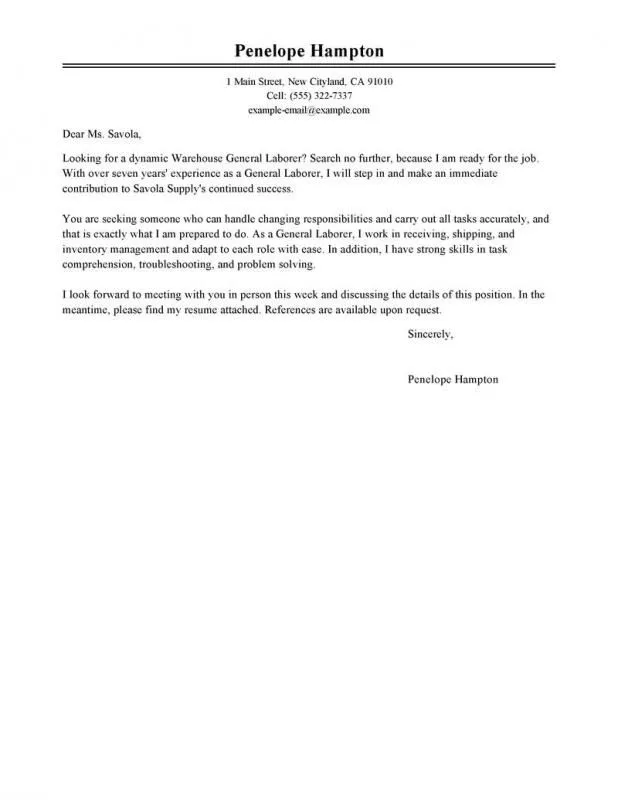
Tailoring your cover letter to each job application is essential. Generic cover letters are easily recognizable and often discarded. Review the job description carefully and identify the key skills and qualifications the employer is seeking. Then, highlight your experiences and achievements that directly relate to those requirements. Customizing your letter demonstrates your genuine interest in the specific opportunity and shows that you understand what the employer is looking for. Tailoring your letter indicates that you’ve taken the time to understand the role, increasing your chances of creating a favorable impression.
Matching Skills to Job Requirements (H3)
Carefully match your skills and experiences to the specific requirements outlined in the job description. Use keywords from the job posting to demonstrate your understanding of the role and the company’s needs. For example, if the job description emphasizes project management skills, highlight your experience managing projects, including specific projects, your role, and the outcomes you achieved. Showing how your skills align with the job requirements proves you’ve understood the position and can meet its demands. Focusing on relevant skills shows the hiring manager that you are a strong fit for the role. This approach increases your application’s effectiveness and your chances of an interview.
Showcasing Achievements
Instead of just listing your responsibilities, focus on showcasing your achievements. Use the STAR method (Situation, Task, Action, Result) to provide detailed examples of how you’ve contributed to past projects or roles. Describe the situation you faced, the task you were assigned, the action you took, and the positive results you achieved. Quantify your achievements whenever possible, using numbers and data to demonstrate your impact. Highlighting your accomplishments illustrates your value and effectiveness as a candidate. Emphasizing achievements offers concrete evidence of your capabilities and helps you stand out from other applicants. This approach makes your letter more persuasive and memorable.
Quantifiable Results (H4)
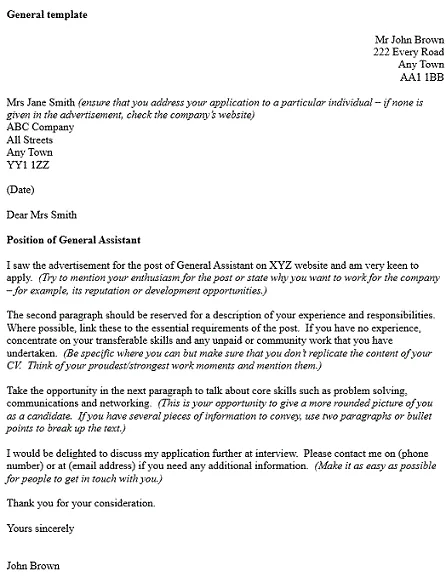
Quantify your achievements by using numbers and data to support your claims. For instance, instead of saying ‘Improved customer satisfaction,’ state ‘Increased customer satisfaction by 15%.’ Including quantifiable results makes your achievements more credible and demonstrates your ability to deliver measurable outcomes. Use metrics such as percentages, dollar amounts, and timeframes to illustrate your impact. Providing measurable results strengthens your application, making it more convincing and showing your value to the hiring team. Quantifiable results give concrete evidence of your capabilities and demonstrate that you are a results-oriented individual.
Demonstrating Enthusiasm and Fit
Throughout your cover letter, demonstrate your enthusiasm for the role and the company. Show that you have researched the company and understand its mission, values, and goals. Explain why you are interested in this particular opportunity and how it aligns with your career aspirations. Expressing genuine enthusiasm makes you a more appealing candidate. Showing your understanding of the company and your career goals increases your chances of getting the job. Demonstrating your passion for the position can differentiate your application from others. Highlighting your genuine interest makes you appear more engaged and committed to the organization.
Closing Paragraph Call to Action
In your closing paragraph, reiterate your interest in the position and express your enthusiasm for the opportunity. Include a clear call to action, such as stating that you are eager to discuss your qualifications further and are available for an interview. Thank the hiring manager for their time and consideration. This section provides a smooth transition and leaves a positive impression on the reader. Your call to action encourages the recruiter to take the next step. This final section reinforces your interest, increasing the likelihood of your application progressing to the next phase.
Formal Closing and Signature
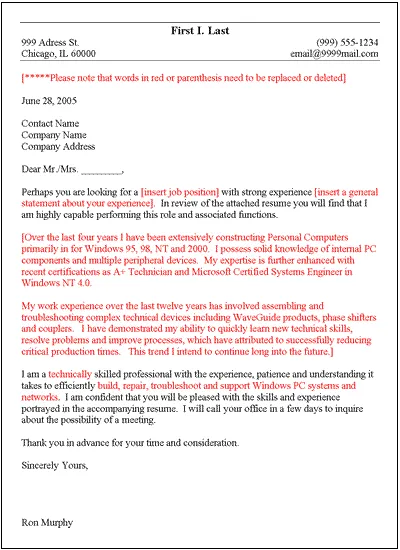
Use a formal closing such as ‘Sincerely,’ ‘Best regards,’ or ‘Yours sincerely.’ If submitting a digital cover letter, include your typed name below the closing. If you are sending a printed cover letter, leave space for your handwritten signature above your typed name. This section adds a touch of professionalism. The formal closing and signature finalize the cover letter with a tone appropriate for business correspondence. This detail, while seemingly small, rounds out your letter and gives it a polished look.
Cover Letter Formatting and Design
The formatting and design of your cover letter should be professional and easy to read. Choose a clean and legible font, such as Times New Roman, Arial, or Calibri. Use single-spacing within paragraphs and double-spacing between paragraphs. Ensure consistent margins and use bullet points to highlight key information. A well-formatted cover letter shows attention to detail and reflects your commitment to professionalism. Good formatting can make your letter visually appealing and accessible. Ensuring a consistent, clean design makes your application more appealing and shows you care about the details.
Font and Readability
Select a professional font, such as Times New Roman, Arial, or Calibri, with a font size between 10 and 12 points. Avoid using overly decorative or unusual fonts, as they can be difficult to read. Ensure your cover letter is easy to read by using clear, concise language and appropriate spacing. Prioritize readability to ensure the hiring manager can easily follow your narrative. This approach can greatly increase the impact of your application. Good font choices and readability contribute to an application that looks professional and is easy to assess.
Proofreading and Editing
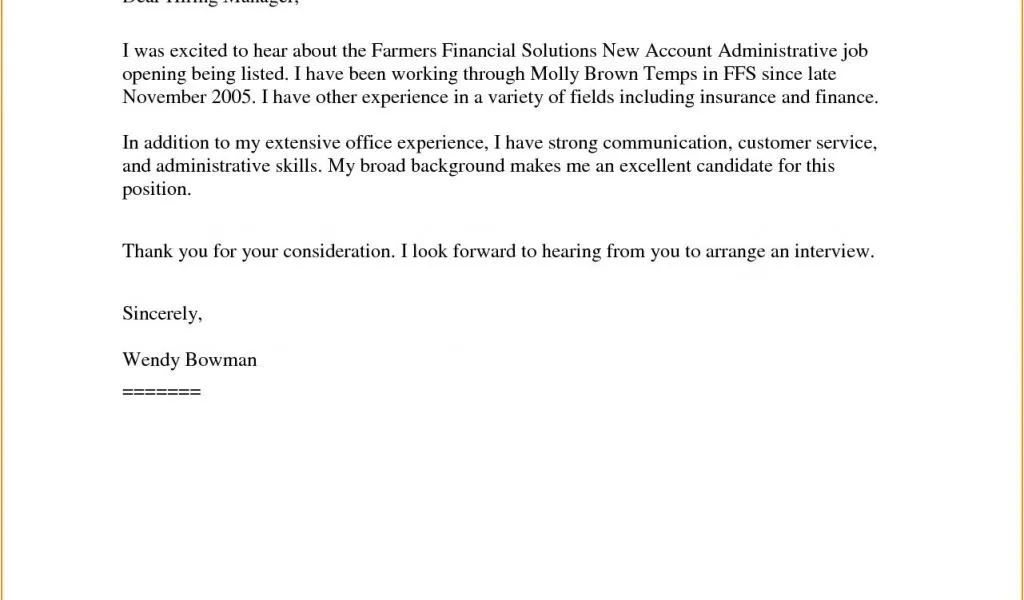
Before submitting your cover letter, carefully proofread and edit it for any grammatical errors, spelling mistakes, or typos. Ask a friend, family member, or career counselor to review your letter as well, as a fresh pair of eyes can often catch errors you may have missed. Pay attention to your sentence structure and flow to ensure your message is clear and concise. A polished cover letter shows that you pay attention to detail and are committed to presenting yourself in the best possible light. Proofreading guarantees that your letter presents a favorable image and doesn’t contain any errors. Meticulous editing shows a high level of professionalism.
Common Mistakes to Avoid
Avoid common mistakes that can undermine your cover letter. These include using generic or boilerplate content, not tailoring the letter to the specific job, including irrelevant information, and having grammatical or spelling errors. Do not make the letter too long, exceeding one page in length. Avoid sounding overly formal or casual. Always make sure your cover letter is free of any negative language or complaints. Identifying and steering clear of these mistakes will boost your chances of success. Avoiding mistakes ensures that the recruiter focuses on your skills rather than getting distracted by errors. Being aware of these common pitfalls helps you build a superior cover letter that makes a powerful impression.
General vs Specific Cover Letters
The type of cover letter you write depends on your specific job search needs. A general cover letter is a template you can use as a starting point when applying for multiple jobs. However, it requires customization for each position. A specific cover letter is tailored to a particular job opening and is designed to address the unique requirements of that role. Knowing the differences between general and specific cover letters ensures you can tailor your application for the greatest impact. The appropriate choice between a general and specific letter depends on the job and the application context.
General Cover Letter
A general cover letter is a template that can be adapted for various job applications. It provides a basic framework highlighting your skills, experience, and interest in a field or type of role. It’s best used when you’re applying to multiple similar positions or are unsure of the specific requirements of the job. While it saves time, it still needs to be tailored to each job opportunity, ensuring you mention the right skills and experience. A general cover letter provides a consistent starting point for your applications, but it must still be relevant. Customize the template to each role for the most impactful results.
Specific Cover Letter
A specific cover letter is customized for a particular job opening. It directly addresses the requirements outlined in the job description and highlights how your skills and experience align with the position. This type of letter shows that you have carefully researched the role and the company. It gives you an opportunity to showcase your understanding of the job’s demands and illustrate your passion. A specific cover letter greatly increases your chances of landing an interview. It shows you are dedicated to the role and have customized your application to highlight your suitability, increasing your overall appeal to the hiring manager.
Cover Letter Examples
Reviewing cover letter examples can provide valuable guidance on formatting, tone, and content. Look for examples that align with your industry and the type of role you’re seeking. Analyze how the authors highlight their skills, achievements, and interest in the company. Study examples to get an idea of the best practices for your own cover letter. Use cover letter samples to inform your writing and refine your application. Examples can inspire ideas for your writing and are extremely helpful when constructing your own application.
Cover Letter Tips
Here are some additional tips for creating a compelling cover letter. Customize your letter for each job, highlighting the skills and experience most relevant to the position. Use keywords from the job description to demonstrate your understanding of the role. Showcase your achievements using the STAR method and quantify your results whenever possible. Proofread your letter carefully for any errors. Maintain a professional tone and be enthusiastic about the opportunity. A well-crafted letter increases the likelihood of your application’s success. Apply these tips to fine-tune your application, making your cover letter stand out from the crowd.
Practice and Refinement
Creating a compelling cover letter takes practice. Write multiple drafts, seek feedback from others, and refine your letter until it accurately reflects your qualifications and personality. Review the job description carefully and tailor your letter to meet the specific requirements. Proofread and edit your letter thoroughly to ensure it is free of any errors. A well-crafted cover letter improves your chances of getting the job. Continuous refinement results in a strong application that stands out. Practice, feedback, and revision are essential to constructing cover letters. Your effort will pay off by creating a compelling and impressive document.
